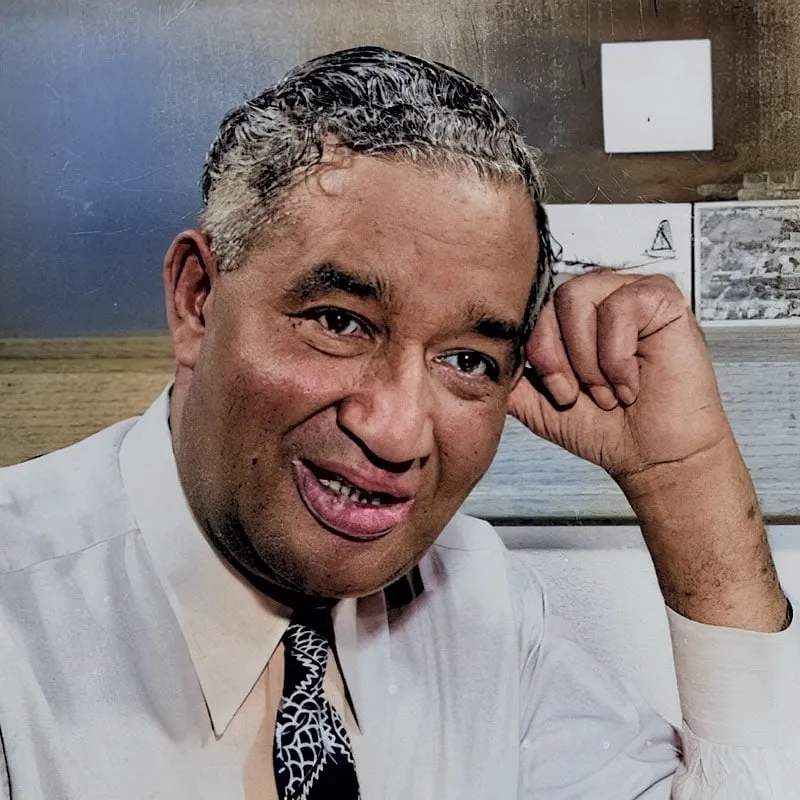Frederick McKinley Jones

FREDERICK McKINLEY JONES – 1892-1961
Frederick McKinley Jones was the inventor of the first convenient refrigeration system for longhaul trucks. His system was later modified to a variety of other carriers including ships and railway cars.
He was born a native of Cincinnati, Ohio, in 1892, and orphaned at the age of nine. Receiving no more than a sixth grade education, Jones moved to Covington, Kentucky where a priest raised him until the age of 16. After leaving the rectory, he hitched rides in automobiles and became interested in how they worked. Returning to Cincinnati, he finally convinced a garage owner to hire him as a mechanic. Within three years, he had become foreman of the automobile shop.
By the age of 19, Jones had built several racing cars, which he drove in racing exhibitions. His keen desire to see his cars being raced encouraged him to attend competitions without permission from his boss. As a result, he was fired from his foreman position. He later accepted a job as chief mechanic on a 30,000-acre farm in Hallock, Minnesota. He extended his mechanical skills and knowledge through his library studies. During World War I, Jones served as an electrician in the United States Army, in France, achieving the rank of sergeant.
At the end of the war, he returned to Hallock and entered a new area of electronic research. He built the first transmitter for the Hallock radio station and designed “talking” movie projector. Although a typical commercial projector would cost about $3,000, Jones was able to build one from odds and ends for less than $100. When motion pictures incorporated soundtracks, he built his own device using creative ideas and information he had researched.
Hearing about Jones and his mechanical ability, Joseph A Numero, owner of a motion picture equipment company, offered Jones a position as an electronic engineer. Sound equipment made by Numero’s firm was used in movie houses throughout the Midwest. In 1938, Jones received his first patent for a picket dispensing machine used by movie houses.
By the late 1930’s, Jones was busy designing portable air-cooling units for trucks that would preserve perishable foods transported to markets from one end of the country to the other. Numero formed a partnership with Jones as vice president. By 1949, the US Thermo Control Company had grown to a $3,000,000 a year business, manufacturing refrigeration units for trans, ships and airplanes.
The crisis of World War II inspired Jones to design a special refrigeration unit that would keep blood serum fresh for transfusions and medicines.
Jones was recognised as an authority in refrigeration engineering. In 1944, he was elected to membership in the American Society of Refrigeration Engineers. During the 1950’s, he served as a consultant on refrigeration problems to both the US Defence Department and bureau of Standards.
Frederick McKinley Jones died in Minneapolis, Minnesota, in 1961, credited with more than 60 patents – forty for refrigeration equipment alone. Jones’ invention completely changed the food transport industry, creating international markets for food crops.
